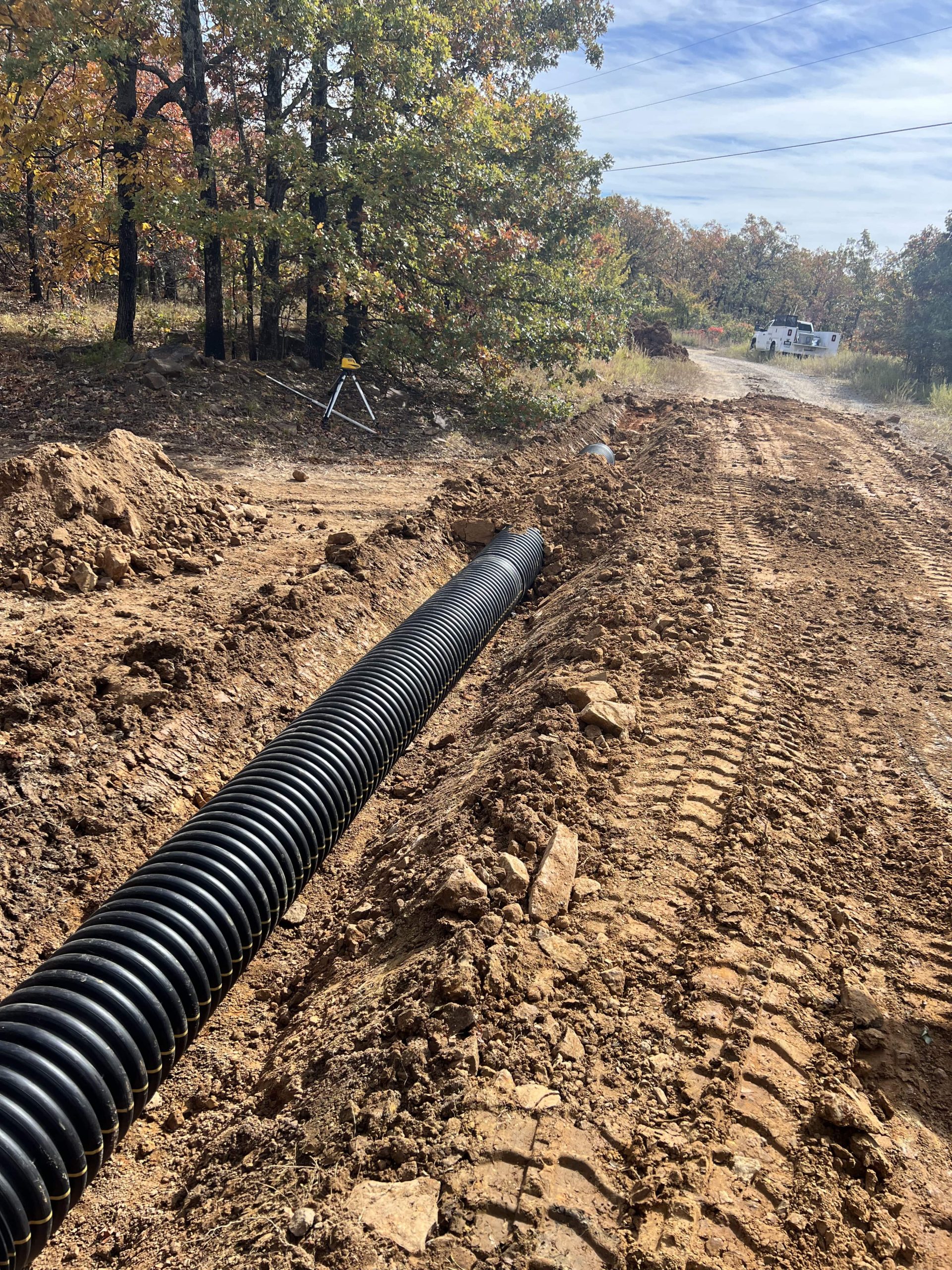High Quality Road Construction for Long-Lasting Roads
High Quality Road Construction for Long-Lasting Roads
Blog Article
Culvert Installment Facilitated: Step-by-Step Guide for Success
From selecting the ideal culvert dimension to integrating correct drainage steps, each step in the setup process plays a critical function in the performance and long life of the culvert system. Remain tuned to reveal the necessary steps and factors to consider that can make culvert setup a smooth and successful undertaking.
Selecting the Right Culvert Dimension
Selecting the ideal culvert dimension is crucial for making sure efficient water circulation and architectural stability in culvert setup jobs - Pad Construction. The dimension of the culvert directly affects the flow capability of water via the framework. A culvert that is also little can bring about flooding and overflow, while one that is too big may result in reduced water rate, potentially triggering debris accumulation and obstructions
To establish the best culvert dimension, variables such as the watershed area, top circulation rates, and hydraulic effectiveness demand to be carefully thought about. Estimations based upon these parameters aid in picking a size that can properly handle the predicted water volume while reducing the danger of obstructions and architectural failing.
It is necessary to speak with design standards and standards to make sure that the selected culvert size meets the project requirements and regional guidelines (Pad Construction). By picking the appropriate culvert size, job managers can enhance water flow, avoid possible problems, and improve the general efficiency and durability of the culvert setup
Preparing the Installation Website
Effective culvert setup requires precise preparation of the installation website to make sure optimal structural support and functionality. Before commencing the installation procedure, it is important to clear the website of any debris, plants, or blockages that could restrain the culvert's placement. Ensuring a level structure is essential for the appropriate alignment and stability of the culvert. This might involve rating the site to create a smooth, also surface that can properly support the weight of the culvert and any anticipated loads. In addition, correct compaction of the soil below the culvert is necessary to avoid settling or changing in time.
Moreover, it is necessary to think about aspects such as soil make-up, groundwater degrees, and environmental influences when preparing the setup site. Conducting a detailed site assessment can aid identify any kind of prospective challenges or threats that may affect the culvert's performance. By putting in the time to prepare the setup site appropriately, you can help guarantee a successful culvert installment that satisfies architectural needs and makes sure long-term performance.
Positioning the Culvert Properly

The grade at which the culvert is positioned is critical for maintaining an appropriate incline for water flow. A progressive incline aids avoid merging and advertises efficient drain. In addition, the culvert ought to be oriented properly to make certain that the inlet and outlet are in the appropriate areas. This orientation is necessary for the culvert to operate effectively in managing water flow.
Backfilling and Compacting the Soil
Proper backfilling and compaction of the dirt around the culvert is important to guarantee security and avoid prospective issues in the future. When the culvert is correctly put, the next critical step is to backfill the area around it with ideal product. The backfill material ought to be devoid of rocks, debris, and raw material to avoid damages to the culvert. It is advised to make use of granular product such as sand or gravel for backfilling, as it gives great drainage and compaction residential or commercial properties.
Compaction assists in reducing the chances of negotiation and makes certain uniform support around the culvert. It is important to portable the dirt evenly on all sides of the culvert to maintain its structural stability.
Correct backfilling and compaction not just provide security to the culvert however likewise aid in protecting against soil erosion and maintaining the durability of the culvert system.
Making Sure Correct Water Drainage Assimilation
Incorporating effective drainage services plays a critical duty in the total performance and longevity of culvert installations. Proper drainage integration is important for handling water flow, avoiding disintegration, official site and making click here for more info certain the architectural honesty of the culvert system. To accomplish this, it is crucial to design a detailed drain plan that considers factors such as the quantity of water anticipated, the topography of the area, and the kind of dirt present.

Furthermore, integrating attributes like disintegration control measures, such as riprap or greenery, can additionally boost the performance of the drainage system. By thoroughly intending and carrying out these water drainage remedies, culvert installments can operate efficiently and withstand the test of time.
Conclusion
In conclusion, proper culvert setup is essential for maintaining efficient drainage systems. By selecting the right culvert size, preparing the installation website, placing the culvert correctly, backfilling and compacting the dirt, and making certain correct water drainage assimilation, success can be achieved. Following these actions will certainly assist guarantee the longevity and effectiveness of the culvert, inevitably adding to the overall success of the water drainage system.
Report this page